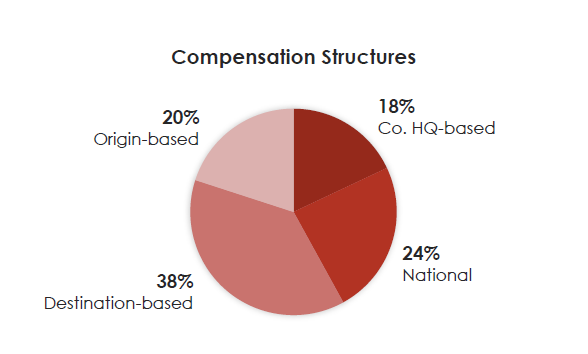Compensation Structures and COLAs
Oct 28 2019Cost of Living Allowance
Cost of Living, or the level of prices of everyday items in a particular location, is often a factor in deciding to accept a relocation. Employees consider their current cost of living and try to compare it to the destination’s cost of living. Factors such as housing, utilities, food, transportation, taxes, and common retail purchases are often considered to determine if the move is a financially sound decision.
Some employees moving to areas that are determined to be higher cost locations will receive a Cost of Living Allowance or Adjustment (COLA). This can be referred to by several other names, and there are several ways the difference is determined. COLAs are a staple in expatriate programs, often focusing on goods & services (food, retail purchases, and basic household services) and housing; however, COLAs are also found in domestic employee mobility programs as well, especially within companies that move people from lower cost areas to higher cost areas.
The fundamental of any COLA is to determine the difference between the origin and destination, commonly referred to as the differential. The differential most often comes from an external data provider. Using an outside source for this information alleviates any bias from the company, offers defensible data from the supplying company, and creates an environment of consistency in which all employees are treated equally.
The Aires Pulse Survey – Domestic Cost of Living takes a closer look at how employers determine compensation structures and COLAs for employees relocating with in the U.S. The survey results also provide comparison to previous research conducted by Aires in 2014 to highlight any changes or trends.
Employee Compensation
The survey gathered a few key pieces of data regarding employee compensation and the destinations employees are moving to.

A slight majority of survey respondents state that the cost of living in their most common destinations is about the same as the origin, while almost four out of every ten respondents said it is higher. More employers are reporting moving people to higher cost of living locations, while fewer are reporting moving people to lower cost of living locations.
Survey respondents confirm paying employees under fundamentally different compensation structures. Although destination-based compensation was the most common approach by respondents, there is no one predominant method used.
Combining these two previous data sets, the survey finds that respondents paying origin-based compensation structures were more likely to move people to higher cost areas. Survey respondents paying national or HQ-based compensation structures were less likely to move people to higher cost areas.
Want to learn more about COLA? Request your copy of the complete survey.
Connect with Aires: Website │ Blog │ Facebook │ LinkedIn │ Twitter